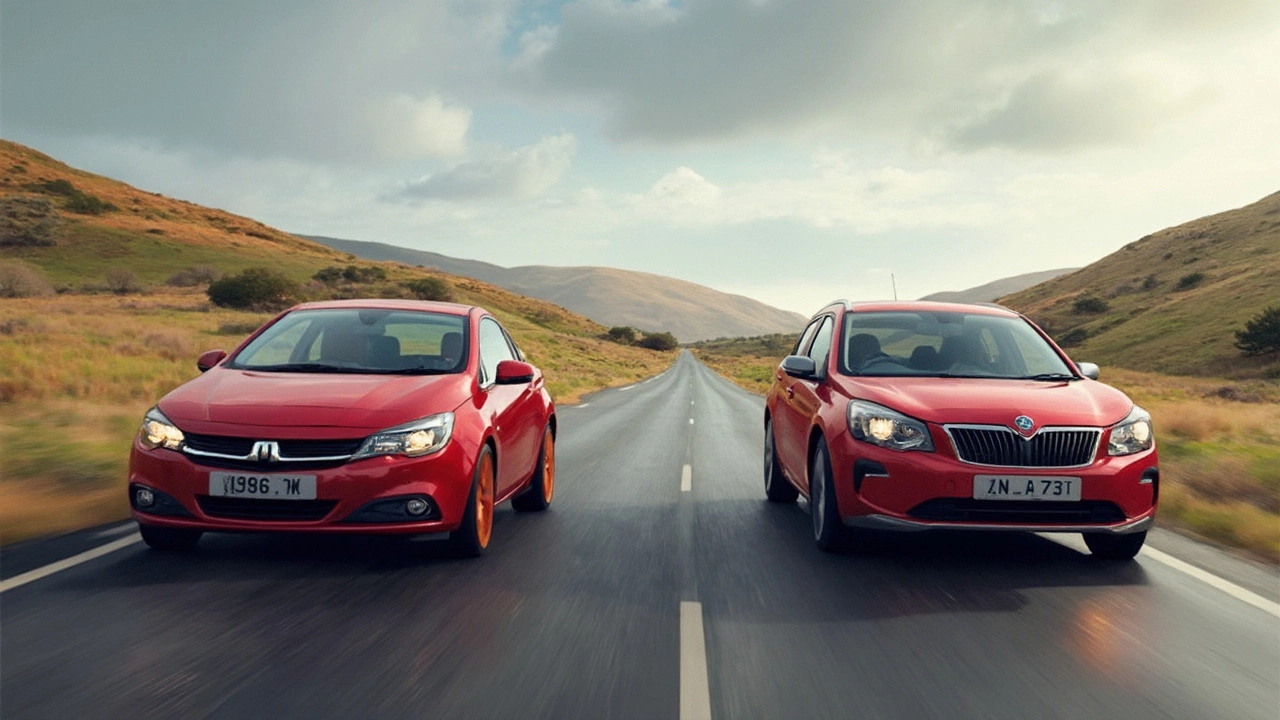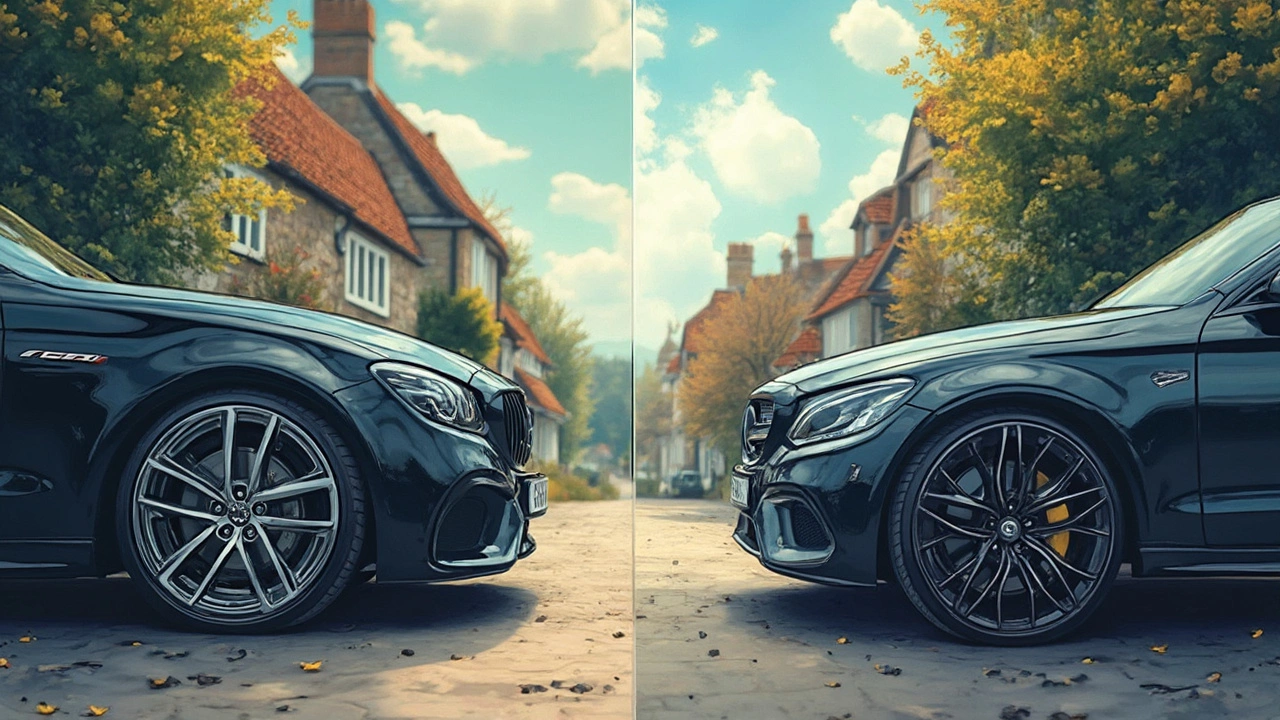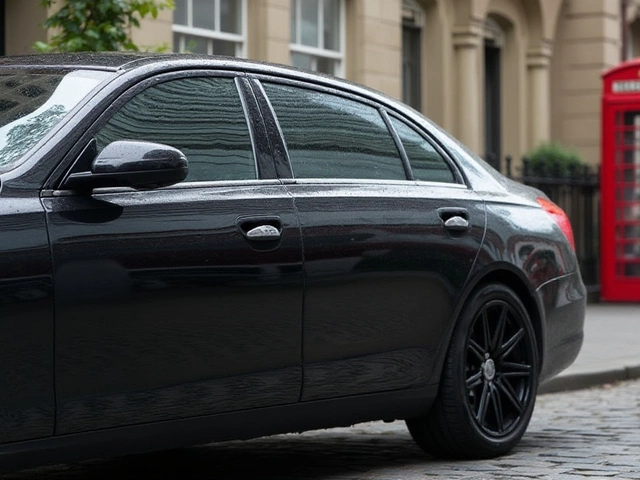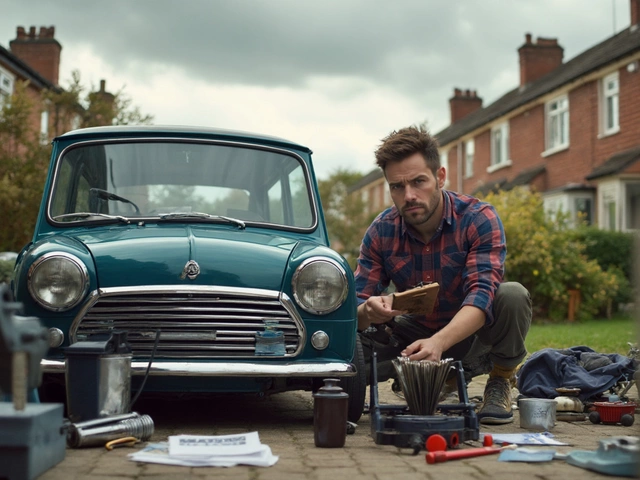Trying to pick between alloy rims and normal rims for your ride? It's not just about looks, though that's a big part of it! Let's break down the real differences between these two options, so you can make a smart choice.
Alloy rims, often made from aluminum or magnesium alloys, are a popular pick because they're lighter than the normal, steel ones. Why does that matter? Well, the weight of your rims affects how your car handles. Lighter rims mean more responsive steering and sometimes better fuel efficiency. But, they can be more prone to damage.
On the other hand, normal rims, which are usually steel, are like the workhorse of the wheel world. They’re strong, can handle rough conditions, and are generally cheaper. But, the trade-off is that they’re heavier, which can affect acceleration and braking.
- The Basics of Alloy Rims
- Understanding Normal Rims
- Performance Differences
- Aesthetic Appeal and Style
- Making the Right Choice
The Basics of Alloy Rims
Alloy rims have definitely become the cool kids on the block when it comes to car wheels, but what’s the deal with them? Most alloy rims are made from a blend of aluminum or magnesium, which makes them lighter than the usual steel options. This lower weight not only boosts your car's performance but also makes the steering feel snappier and more responsive.
One big plus of these rims is their ability to dissipate heat better. Why care about heat? Well, especially if you're into spirited driving or live somewhere hilly, your brakes take a beating. Since alloy rims help cool things down quicker, it can actually protect your brakes and improve stopping power. Plus, they can improve fuel efficiency, which is always a good thing.
But it's not all sunshine and roses. One downside is that these rims can be a bit more fragile. They're fantastic for smooth roads, but if you often drive on rugged terrain, they might be more prone to damage compared to their rugged steel counterparts. This doesn't necessarily mean you'll find yourself replacing them every other weekend, but it's something to keep in mind.
And of course, let’s not forget about style. Alloy rims typically look more modern and come in a variety of designs that can really pimp out your ride. Whether you want something sleek and understated or a wheel that stands out in a crowd, there are plenty of options to fit your vibe.
In a nutshell, if you’re after something that boosts performance and enhances looks, alloy rims are your go-to. Just be sure to weigh the pros and cons based on where and how you drive most often.
Understanding Normal Rims
When we talk about normal rims, we're mostly looking at steel rims. These guys have been the go-to for many car manufacturers, especially for base models. Why? Because they hit that sweet spot of being durable and cost-effective. If you're the kind of person who values strength over style, normal rims might be more up your alley.
Steel rims are tougher compared to their alloy counterparts. This means they can take a beating. Think about those nasty potholes or occasional bumps on rough roads; steel rims handle them like a champ. They're less likely to bend or crack under pressure, making them perfect for those who drive in harsh conditions.
On the upside, these normal rims are generally more affordable. If you're shopping on a budget, steel rims are the way to go. Replacing them won't burn a hole in your pocket either. According to industry expert Joe Carver, "Steel rims offer a sensible choice for everyday drivers who want durability without the flashy price tag."
But, as with anything, there are trade-offs. Steel rims are heavier, which can affect your car's acceleration and braking. The extra weight can impact fuel efficiency over time, meaning you might spend a bit more at the gas station.
Here's a quick comparison to paint a clearer picture:
| Rim Type | Strength | Cost | Weight |
|---|---|---|---|
| Steel Rims (Normal Rims) | High | Low | Heavy |
| Alloy Rims | Moderate | High | Light |
It's all about balancing your needs. Do you need something robust to handle your daily grind, or are you leaning towards performance and a sleeker look? Your choice in rims should reflect your driving lifestyle and what you value most in a ride.

Performance Differences
Here's where things get interesting with alloy rims and normal rims. It's like comparing a nimble sprinter to a reliable workhorse. Spoiler: both have their own set of unique skills.
Alloy rims are known for being lightweight, and with less weight, your car can react quicker. This means faster acceleration and more precise steering. Imagine weaving through traffic with ease! Plus, less weight on the wheels can improve fuel efficiency, which is always a good thing.
On the flip side, normal rims, usually made of steel, add a bit more weight to your car. This isn't all bad, though. The extra heft means that your vehicle might feel more stable, especially on rough or uneven roads. However, this additional weight can lead to slower acceleration and possibly longer stopping distances.
Now, let's talk about the weather factor. If you're in a place where it snows a lot, you might hear folks saying steel rims are better. Why? They tend to handle the salty road conditions better without corroding as quickly as some alloys might. But if you plan on keeping your car light and zippy and live somewhere with milder conditions, alloy rims could win you over with their performance perks.
| Feature | Alloy Rims | Normal Rims (Steel) |
|---|---|---|
| Weight | Lightweight | Heavier |
| Handling | Responsive | Stable |
| Durability | Moderate | High |
| Weather Resistance | Prone to corrosion | Better in harsh conditions |
In the end, both types have their own advantages and challenges. Whether you prioritize speed and responsiveness or strength and stability can guide you to the right choice for car wheels.
Aesthetic Appeal and Style
If you've ever drooled over the wheels on a sports car, chances are you were admiring alloy rims. They come in all sorts of designs, colors, and finishes. You can find everything from sleek, monochrome looks to eye-popping chrome. This makes them a favorite for folks looking to add some personal flair to their car or truck.
The customization potential is practically endless. Want to go for a sporty look? Black matte alloys might catch your eye. Looking for something more classy? Polished aluminum might be up your alley. Because they can be customized so easily, alloy rims often give your ride that unique touch that stands out on the road.
On the flip side, normal rims, usually made of steel, tend to have a more basic design. Think factory-standard—functional but not flashy. They usually come with hubcaps that you can swap out for different styles, but at the end of the day, they don't offer nearly as many design options as alloy ones do.
But don't write off steel rims just yet. Those hubcaps can be a blank canvas for painting or personalization. If you're on a budget and still want a touch of style, you might dress up your steel wheels without breaking the bank.
In the end, whether you go for the show-stopping shine of alloy rims or the understated, practical look of normal rims, there's something out there to match your style and your ride.

Making the Right Choice
Deciding between alloy rims and normal rims isn't just about what looks cool on your car. It boils down to what you really need from your wheels in terms of performance, budget, and style.
Firstly, consider your driving habits. Do you mostly drive in the city, or do you hit the highways a lot? If you're into performance and want a bit more zest in your driving, alloy rims could be your go-to. They help with better handling and look sleek. But, remember they can be pricier, especially if you need to replace one after a nasty pothole encounter.
If you're more concerned about budget and durability, especially for rougher roads or winter driving, normal rims might be a safer bet. They're tough and can take a lot of beating while being easier on the wallet when it comes to replacements.
Also, think about maintenance. Alloy rims usually need more attention to avoid corrosion, but they clean up nicely, maintaining their shine. Meanwhile, steel rims might not win beauty contests but they are straightforward to maintain.
Finally, check out a comparison of their attributes:
| Feature | Alloy Rims | Normal Rims |
|---|---|---|
| Weight | Light | Heavy |
| Cost | Higher | Lower |
| Durability | Low to Medium | High |
| Maintenance | Moderate | Low |
At the end of the day, weigh the pros and cons based on what you value more and where you'll be driving. There's no one-size-fits-all answer, but with these pointers, you're now better equipped to make an informed choice!






